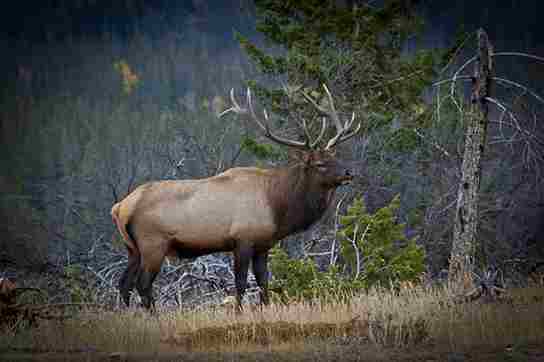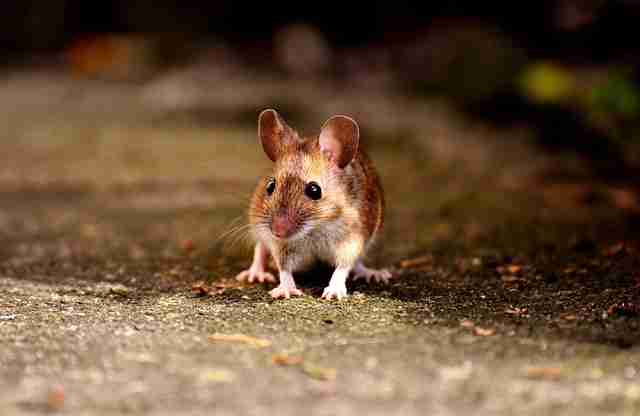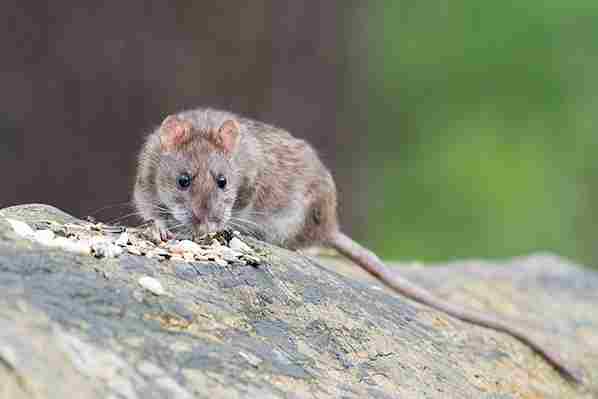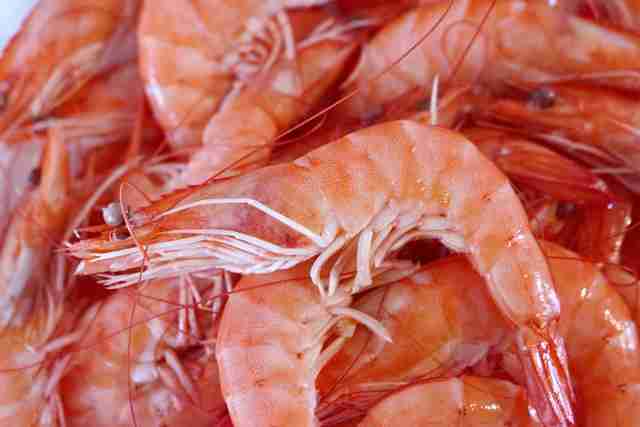How To Quarter An Elk (Step-by-step)
The real challenge of elk hunting often lies in what happens after the hunt – quartering the elk.
This can present a challenge, especially if it’s your first time handling a dead elk.
Quartering an elk makes it easier to transport and ensures the meat doesn’t get spoiled. Let’s see how to do it properly.
How to Quarter an Elk

Before You Start
- Safety First: Ensure you are comfortable handling sharp objects such as knives and hatchets.
- Field Dressing: Before quartering, you should have already field-dressed the elk, removing its internal organs. This should have been done as soon as possible after the kill to prevent the meat from spoiling.
- Tools: You’ll need a sharp hunting knife, a bone saw, and game bags or plastic bags for storing the meat.
Tools Needed
- Sharp Hunting Knife: Essential for cutting through the elk’s hide and muscle.
- Bone Saw or Hatchet: These will come in handy for cutting through bones and joints.
- Game Bags: Use these to store the quartered meat and protect it from dirt and insects.
- Disposable Gloves: Gloves help maintain hygiene and make the process less messy.
- Rope or Straps: You’ll need these to secure the elk during the quartering process.
Quartering the Elk
Remove the Hind Quarters:
- Start by laying the elk on its back.
- Make a horizontal cut around the hindquarters, just above the hocks (knees).
- Once you’ve made this cut, use your knife to separate the hindquarters from the body, following the natural seams between the muscles. You may encounter some resistance where the hip joint connects; you can use your bone saw to help with this.
Remove the Front Quarters:
- Next, move to the front of the elk.
- Make a horizontal cut just above the knee joint of the front legs.
- Use your knife and bone saw to separate the front quarters from the body, again following the natural seams between muscles.
Separate the Ribcage and Backstraps:
- Locate the ribcage, and cut through the ribs along the spine to separate the ribcage from the backstraps.
- The backstraps are the long muscles running along either side of the spine. These are often considered the most tender cuts of meat on the elk.
Trimming and Packaging the Meat
Once you’ve removed the quarters and backstraps, you’ll have various cuts of meat. Trim away any excess fat, connective tissue, or undesirable parts. It’s a good idea to label your meat at this point if you’re processing multiple animals or storing the meat for an extended period.
Packaging:
- Place the meat in game bags or heavy-duty plastic bags to keep it clean and protected.
- If you’re in the field, you can hang the bags in a cool, shaded area or place them in a cooler with ice.
Transportation:
Depending on how big the elk is and where you stay, you may need to quarter it further to make it easier to transport. Make sure you follow the hunting laws and regulations in your area for transporting and tagging big games.
Proper Cooling:
If you can, cool the meat down as quickly as possible after quartering by placing it in a cooler with ice or in a cold storage area. Once you’re back home or at a processing facility, you can further process the meat into specific cuts like steaks, roasts, and ground meat.
Read More: How Much Does An Elk Weigh?
How to Quarter an Elk Using the Gutless Method
The gutless method is an alternative way to quarter an elk without first removing the internal organs. The main benefit is that it’s quicker and lowers the risk of the meat getting contaminated.
Here’s how to quarter an elk using the gutless method:
- Position the elk on one side, with the exposed side facing up.
- Remove the hide from the exposed side (we’ve already gone over how to do this; refer to the section on how to quarter an elk).
- Remove the front and hindquarters, backstraps, and tenderloins from the exposed side.
- Flip the elk onto its other side and repeat the process.
- If desired, remove the head and antlers using a bone saw.
Pro Tips for Successful Elk Quartering
- Remember to sharpen your knife before starting and as needed throughout the quartering process. You can use a honing rod or knife sharpener as needed.
- Don’t rush the process. It’s better to spend a bit more time to ensure you remove as much meat as possible.
- Bone out the quarters if you prefer to remove the bones for easier transport and storage.
- Store the meat in game bags or plastic wrap to protect it from dirt, insects, and other contaminants.
- Chill the meat as soon as possible after quartering to preserve its quality and prevent spoilage.
- Label your game bags to avoid confusion later on. Knowing which cuts are in which bags will make the butchering process easier.
- The faster you can cool the meat, the better the quality. If possible, hang the quarters in a shaded area with good air circulation. In warmer weather, consider placing ice packs or frozen water bottles inside the game bags.
What Does Quarter Meat Mean?
“Quartering” refers to the process of dividing an animal carcass into four main sections or “quarters.”
When applied to an elk or other large game, this typically involves separating the front quarters (shoulders), hind quarters (hips and thighs), and backstraps (loin) from the carcass, while also removing the tenderloins (inner loin) from the ribcage.
The purpose of quartering is to make the meat easier to transport, cool, and butcher.
Where Do You Quarter an Elk?
The ideal location for quartering an elk is on the field immediately after a successful hunt. This will keep the meat fresh; leaving the dead animal for longer might cause the meat to get spoiled or attract bacteria. Choose a clean, flat area with good ventilation and shade if possible.
How Much Meat is in an Elk Quarter?
The amount of meat in an elk quarter depends on how old and big the elk is, as well as how precise you are with your cuts. On average, a mature bull elk can yield around 190-225 pounds of boneless meat, while a cow elk can yield around 120-150 pounds. Each quarter can represent approximately 25% of the total meat yield.
How Do You Hang Elk Quarters?
To hang elk quarters, follow these steps:
- Find a sturdy tree branch or crossbeam that can support the weight of the quarters.
- Use a gambrel or sturdy rope to create a loop for hanging the quarter.
- Thread the loop around the elk’s leg, just above the knee joint, and secure it tightly.
- Hoist the quarter up, ensuring that it’s suspended off the ground and has ample air circulation.
- Repeat the process for the remaining quarters.
How Big Are Elk Quarters?
Again, the size and age of the elk come to bear here. Generally, front quarters are smaller than hindquarters. A front quarter from a mature bull elk can weigh 40-60 pounds, while a hindquarter can weigh 60-80 pounds. Cow elk quarters are generally smaller, with front quarters weighing 25-40 pounds and hindquarters weighing 40-60 pounds.
As I said earlier, these numbers are not always peculiar. In fact, I have seen hindquarters that weighed over 100 pounds.
How to Cape an Elk
Cape an elk if you plan to create a shoulder mount or other taxidermy display. Caping involves carefully removing the hide and preserving it for the taxidermist. Follow these steps:
- Lay the elk on its back, with the head pointing uphill if possible.
- Make a cut around the circumference of the body, behind the front shoulders.
- Make a cut along the spine, from the first cut up to the base of the skull.
- Make cuts around the front legs, just above the knee joints, and then along the inside of the legs up to the initial body cut.
- Carefully peel the hide away from the meat, working slowly and cautiously to avoid cutting into the hide.
- Use your knife to help separate the hide from the meat when necessary.
- As you reach the neck, continue working the hide free until you reach the base of the skull.
- Use a bone saw or hatchet to sever the head from the spine, being careful not to cut into the cape.
- Roll the cape up and store it in a cool, dry place until you can deliver it to a taxidermist.
Read More: How To Field Dress An Elk






